CRJ 19:1 is out now!
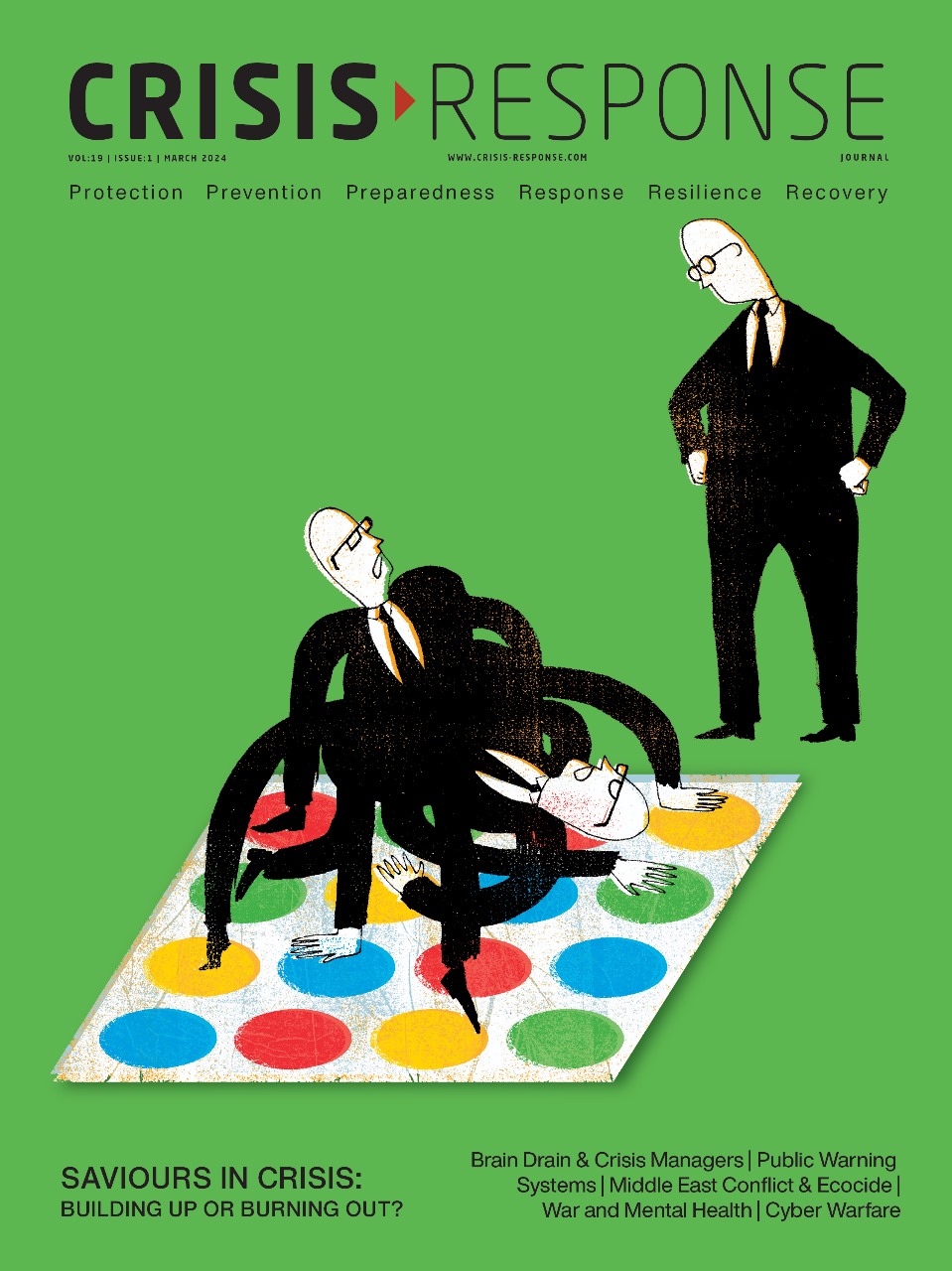 Our first issue of the year is now available to all subscribers. You can log in and read the digital edition on the CRJ website; hard copies will be mailed out shortly.
Our first issue of the year is now available to all subscribers. You can log in and read the digital edition on the CRJ website; hard copies will be mailed out shortly.
This edition primarily focuses on the crisis that those in the business of resolving crises are currently experiencing. It also examines conflicts and how they are affecting the world. Let’s have a look at what's inside.
Comment: What defines ‘truth’? Matt Minshall seeks an answer as he lays emphasis on the importance of seeking truth as a fundamental aspect of maintaining a civilised society.
Tony Jaques deconstructs the recent reputation crisis at three major US universities. When there’s a reputational crisis to resolve, do we call the lawyers or the crisis managers, he asks.
Crisis loop: We start off with Lyndon Bird’s dissection of the latest Annual Trends and Predictions Report from DRI International, where he explores pressing issues and events shaping what risk and resilience will look like going forward.
The issue places emphasis on the negative feedback loop that crisis managers and frontliners are dealing with. For instance, Beverley Griffiths writes: "One thing we have failed at is planning for individual professionals and this industry. There are statutes, guidelines, standards, and even competencies for how or what to do.” Meanwhile, Jeannie Barr addresses the exacerbating pressure and reliance on resilience and crisis management professionals as they are asked to do more and more with fewer resources, strained budgets, and deteriorating physical and mental wellbeing.
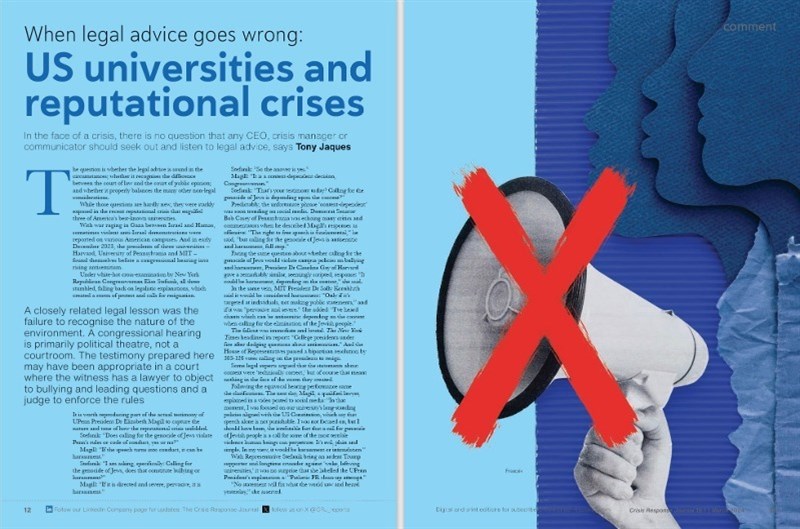
Advice from lawyers or crisis managers? Tony Jaques argues the latter may hold more weight
We also explore ‘identity’ for crisis managers in this edition. Wouter Jong puts public leaders in the spotlight in times of crisis management and their less-spoken role in providing psychosocial care, and Cody Santiago asks if there truly is an identity crisis in emergency management. He emphasises the importance of understanding roles from various perspectives and advocating for collaborative problem-solving, regardless of titles or sectors.
James Lodge emphasises the enormous responsibility crisis leaders bear and the fact that they are not immune to the pressures and turbulence of disinformation-related emergencies.
The first issue of the year also introduces a new section called 'Next Gen', which explores up-and-coming innovative solutions to the world’s problems. Gracie Broom and Magdalena Garibaldi explore their concept of empowering communities through 3D-printed, affordable housing for domestic violence victims. Meanwhile, Tori Simpson reviews her co-design experiment in the Philippines, which uses design thinking and interdisciplinary research with local partners to create an educational tool for disaster preparedness.

Gracie Broom and Magdelana Garibaldi explore their 3D housing concept, aimed at helping victims of domestic violence
Onto security: Catherine Piana looks at how cyber and physical security have taken down critical infrastructure and the havoc that such events wreak. Andy Blackwell and John Wood take the discussion forward as they explain how traditional siloed approaches have become obsolete in today's security landscape. We need blended security against blended threats.
Nicolò Broglia explores methods of building cyber resilience, delineating the intricacy of of services and infrastructures that rely on cyberspace and the vulnerabilities and new risks resulting from it.
What happens in the aftermath of war? While we spend a lot of time and energy looking at the immediate humanitarian cost of conflict, we don’t often think of the longer-term, slow-killing consequences. Gilles Paché writes that the effects of the Russia-Ukraine war and the Israel-Palestian conflict will have lasting effects on the environment, and these too will leave many dead.

A war doesn't stop killing when it ends. Gilles Pache takes a look at how 'ecocides' are borne of conflict
Marion Leboyer takes on another aspect of conflict: Mental health, if left unattended, can affect the long-term health and quality of life. She explores a mental health tool meant for civilians in both the Israeli and Palestinian populations.
Discussing response: Andrew Jaspers examines resilient responses to school emergencies, analysing the lessons learned from recent school emergencies and providing best practices for effective crisis management and recovery.
Rania Khbais concluded her two-part series, where she examines airport crisis management. This piece assesses and contrasts the structure and operations of emergency operations centres (EOCs).
International-level sports events are hot favourites for terrorists for their immense potential to terrorise them. Stefano Betti writes: "Olympic flame Major sports events are hugely attractive playgrounds for terrorist groups because of their highly symbolic value and the gigantic media effect that an attack can have."
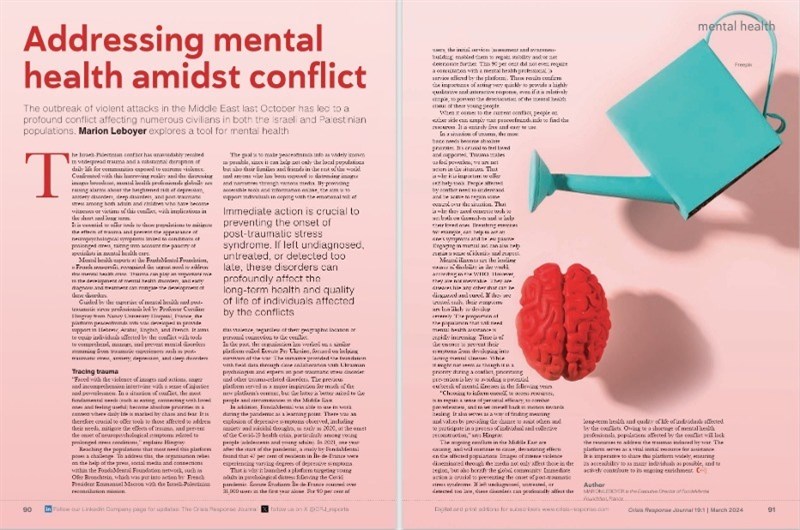
Civillians caught in warzones need mental-health related help sooner rather than later
For organisations, Colm Gayton and Elaine Patrao highlight the demand for a strategic equilibrium between stability and adaptability as the business environment grows increasingly dominated by perpetual permacrisis.
Pavel Kiparisov provides lessons from complexity theory to combat the increased financial uncertainty of public institutions and private companies facing budgeting problems.
In the same vein, how can new organisations emerge? Mostafa Sayyadi and Michael J Provitera underscore the intangible elements of organisation that play a greater role in building a dynamic company than the financial balance sheet.
To ensure privacy in healthcare and retail, Simon Randall writes about video data redaction technology, which has the potential to generate immense benefits and revolutionise these sectors, while calling on all organisations to adopt a privacy-first approach.
Lina Kolesnikova and Michael Kolatchev examine the evolving nature of modern risk management, which presents new complex challenges to crisis managers. They emphasise the need to learn from the practices and lessons of history while exploring the 'Twilight Zone' of modern risk management.
Onto public warning systems: As climate change consequences become more and more intense, Bisma Arif Warraich outlines the need for an early warning system in Karachi, Pakistan, in light of the recent urban flooding in the metropolitan city.
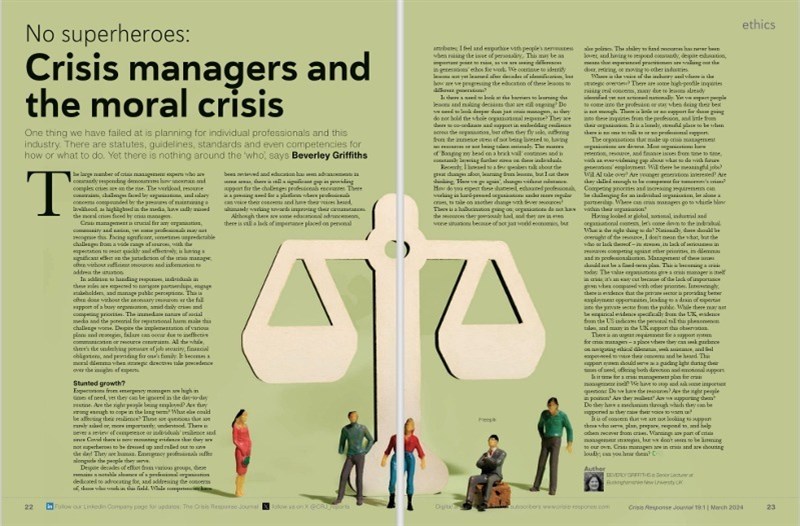
Beverley Griffiths questions what the industry is giving back to crisis managers
Georgios Marios Karagiannis, Gianluca Pescaroli, and Sarah Dryhurst highlight early warning systems as a common disaster and crisis response function in nearly all types of hazards and threats and that they are needed for holistically managing cascading, compound, and interconnected risks.
Meanwhile, Amy Leete highlights the need to think more about disability when it comes to emergency communications: “Over nine per cent of Europe’s population is deaf or hard of hearing. With 153 million emergency calls made in the EU in 2022 alone, it is likely that some of this included deaf or hard-of-hearing people. It may surprise readers to know that regardless of this, most public safety answering points still only accept voice calls.”
Ilan Kelman, Jarle Eid, and Gianluca Pescaroli discuss that maintaining crisis response readiness and capacity goes beyond tools and technical resources. It involves understanding all individual and organisational components of crisis response by crisis managers during extended crises. Similarly, Andre Pugas examines the evolution of vehicle rescue in the Military Fire Department of Santa Catarina and the effect of the World Rescue Organisation on operational activities.
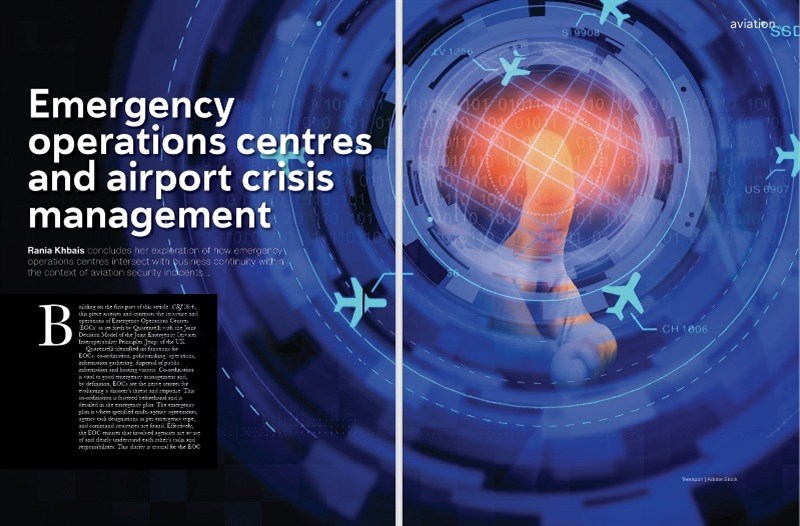
Rania Khbais concludes her two-part series
On-going disasters seem to show no sign of reduction, Robert Kelly emphasises that water is a critical component in supplying disaster relief, highlighting the challenges associated with importing bottled water and the benefits of purifying and packaging water locally.
Book review: Matt Minshall reviews Roger Warren's book, Terrorist Movements and the recruitment of Arab foreign fighters rummaging through history, searching for facts to explain the idea of two different phases in the lives of Arab foreign fighters.
Frontline: Amy Leete reviews the European Emergency Number Association (EENA 112) report.
The Crisis Response Journal is available to subscribers only – we have a range of subscription rates to suit all needs. Click here for more details or contact us at hello@crisis-response.com – we would love to hear from you!